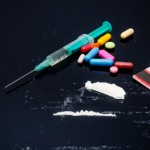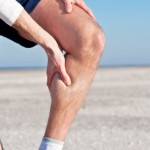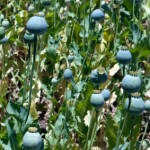In the January 25, 2013 online edition of The New York Times I found a highly significant article titled "F.D.A. Likely to Add Limits on Painkillers." An advisory panel to the Food and Drug administration wants to strengthen the current rules about such drugs as Vicodin, a frequently prescribed powerful pain pill.
Similar recommendations failed to make it through Congress last year; they were lobbied against by business interests with considerable heft behind them.
Now Vicodin and other drugs made from hydrocodone aren't the worst problem, but, as you'll see, they are a way to call attention to medications that for the past four years have caused more deaths in the United States than traffic accidents, or those from illegal drugs including heroin and cocaine.
I went back to an article in the Journal of the American Medical Association, AKA JAMA. It was published on Dec 14, 2011 in the section called "Vital Signs," and was a CDC look at overdoses of prescription opioid pain relievers (OPRs) in the US, especially during the 1999-2008 time frame. The news was stark; in 2007 nearly 100 people died from these drugs every day, with death rates that have tripled since 1991.
Between 1999 and 2010 the sales of OPRs quadrupled with enough prescribed to give every single one of us US adults a standard dose of these medications every 4 hours for a month. The health-care cost of abuse of these drugs is staggering, estimated at $72.5 billion a year.
Of the total number of US 2008 deaths from drug overdoses (36,450), OPRs were involved in 14,800 and the years of potential life lost before age 65 was comparable to the figure from motor vehicle accidents. I was startled, but in retrospect not entirely surprised that a study showed 3% of American physicians accounting for 62% of the OPRs prescribed.
Some of those doctors are anesthesiologists, oncologists or other physicians fully trained in pain control and working in highly specialized hospital-associated units. Their use of these medications is appropriately aimed at patients with cancer, those with severe acute injuries and perhaps some others whom almost all of us would agree should have whatever it takes to minimize agonizing pain.
Others in the group of "mega-prescribers," however, may not be pain specialists; they could be working for "pill mills." That has happened in a number of states with some of those doctors being accused at this stage and several others being convicted and facing jail sentences.
But the new rules, which have to be approved by the FDA and then by the Department of Health and Human Services before they actually take effect, make enormous sense to me: refills forbidden without a new prescription; no fax or phone prescriptions, only written ones; and drug distributors being forced to store OPRs in special vaults.
The Times article today notes the panel was not monolithic in their voting (19 to 10) with some highly skeptical that the suggested changes would do much to alter the current surge of inappropriate or illicit drug use in America. One commented that oxycodone-containing products already are in a more restrictive category.
One of the subject matter experts quoted was Dr. Nathaniel Katz, an anesthesia assistant professor at Tufts University medical school. Katz served as Chair of the FDA's Advisory Committee, Anesthesia, Critical Care, and Addiction Products Division, from 2000 to 2004 and thinks the recommended rule was largely symbolic, giving a message both to doctors and patients. He commented that the OPRs the panel was voting on are a relatively minor player. Katz now devotes much of his time to a clinical research company that's attemting to develop new treatments for pain.
Vicodin and like drugs containing hydrocodone are the most widely prescribed OPRs, but are responsible for a minority of deaths with medications containing oxycodone or methadone, although less commonly given to patients, accounting for two-thirds of the drug overdose deaths.
So the question now is whether the proposed new rules make it over the remaining hurdles.
I hope they do.







